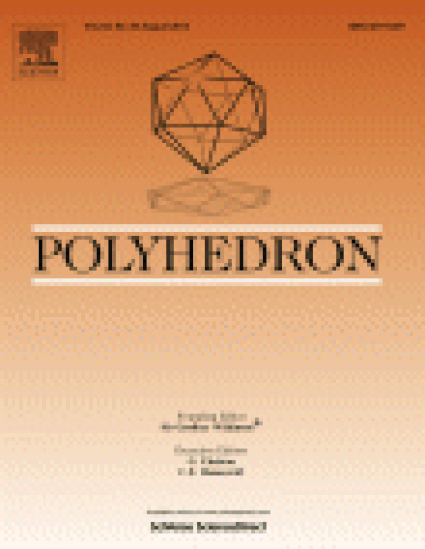
Article
A cyanido-bridged trinuclear {FeIII2NiII} complex decorated with organic radicals
Polyhedron
(2013)
Abstract
Reaction of [NEt4][(pzTp)FeIII(CN)3], nickel(II) trifluoromethanesulfonate and 4,4,5,5-tetramethylimidazoline-1-oxyl-2-(2′-pyridyl) (IM-2Py) affords {[(pzTp)FeIII(CN)3]2NiII(IM-2Py)2}·2DMF·H2O·0.5Et2O (1) as a bent cyanide-bridged trinuclear complex. As judged from simulations of the magnetic data, the magnetic exchange between the {FeIII2NiII} (S = 2) and both IM-2Py (S = ½) radical ligands are negligible, or in other words, each radical imparts a Curie contribution to the overall paramagnetism of the complex; the best set of parameters are giso = 2.53(5), grad = 2 (fixed), and Jiso/kB = 3.9(1) K. ac susceptibility and M versus Hdata show that 1 does not exhibit slow relaxation of the magnetization above 1.8 K. Consistent with the magnetic data, we conclude that bent cyanide bridges, an improper alignment of the FeIIILS anisotropy tensors, and/or small IM-2Py ring distortions conspire to bring insufficient magnetic anisotropy to the complex, and prevent observation of single-molecule magnet behavior.
Disciplines
Publication Date
August 1, 2013
DOI
10.1016/j.poly.2013.04.039
Citation Information
Yuan-Zhu Zhang, Dong-Feng Li, Rodolphe Clérac and Stephen M. Holmes. "A cyanido-bridged trinuclear {FeIII2NiII} complex decorated with organic radicals" Polyhedron Vol. 60 (2013) p. 110 - 115 Available at: http://works.bepress.com/stephen-holmes/3/
